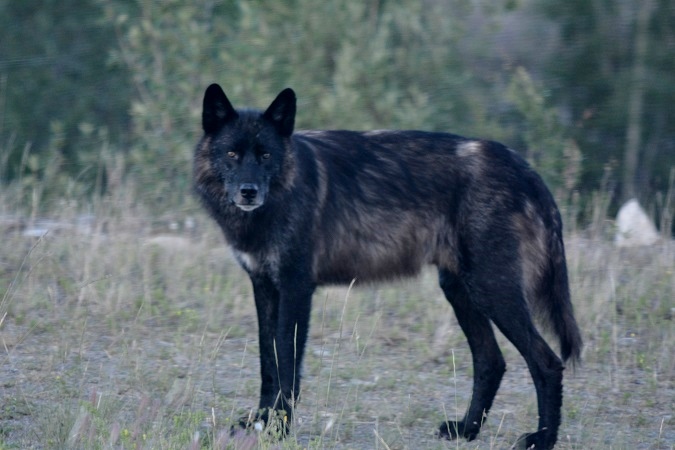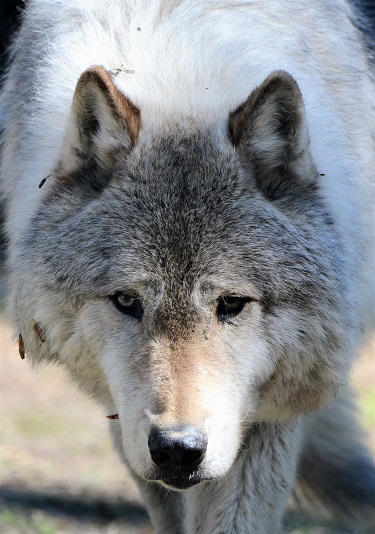
Have you ever seen a wolf in the wild?
Originally written in 2014, this article has been updated and more photos added Jan 2023
One of the things that I have wanted for many, many years is to see and photograph wolves in the wild. I spend a lot of time in the mountains and forests but have never seen one until now.
Range
The Gray Wolf once ranged over all of North America as far south as Mexico as well as Europe, north Africa, and Asia, but human hunting has now limited their range primarily to Alaska and almost all of Canada except the prairies, southern Ontario and the east coast. There are also a few isolated pockets of wolves in National Parks in the lower United States and a few border areas in Washington, Montana, Idaho and Minnesota.
They can also be found in eastern Europe, Russia, and parts of northern Asia. Wolves were exterminated in western Europe by the mid-1800s. Some still exist in far eastern Europe but in very small numbers. Wolves were killed because of an incorrect belief that they were very dangerous. Wolf attacks on humans are very rare. A total of two people have been killed by wolves in North America in the past 100 years. They sometimes attack livestock, but this is also rare. Far more livestock are killed by Cougars and stray dogs than wolves. Most wolves live in remote areas where there is no livestock.
Recovery and Populations
Wolves are starting to recover from hundreds of years of persecution. They have been protected in Italy since 1976 and now number about 500 animals. There are about 2,000 in Spain and Portugal. Wolves have re-entered Sweden and Norway in recent years, but their population is only about 200 animals. There are now about 800 in Poland and a very small number in eastern German and other European countries. There are about 2,500 in Romania. Alaska has 7,000 to 11,000 wolves.
Canada remains the country with the most wolves, by far, with a population of between 50,000 and 60,000. There are about 25,000 to 30,000 in Russia and approximately 10,000 to 30,000 in Mongolia.
Searching for Wolves
As you drive or hike through remote areas of Canada, you might to see wolves, Cougars, Lynx, Bobcats, Wolverine and other mammals. But your chance of seeing them are slim. They are there and are not rare, but they are shy and avoid humans. Bears, on the other hand, are seen by people daily. You may not see a Cougar or a wolf, but they probably saw you passing. They remain hidden until you are gone.
On my recent trip to the Arctic coast on the Dempster highway, I was fortunate to see a Lynx and a small pack of wolves. Unfortunately, the Lynx ran across the road in front of my truck, and I did not get a good photo, although I had a nice look at it. What a beautiful animal.
What colour is a Gray Wolf?
I spent two nights searching for wolves on the Dempster. The first night, after staying up all night, I saw very little. However, I did see a huge moose. On the second night, while parked in a clearing on the side of the road, a small pack of wolves came out of the woods and walked right up to my truck. I saw three; two black and one white. The Gray Wolf, like the Red Fox, can be several different colours. They can be white or black or all different shades of grey in between.
There are usually between two and seven wolves in a pack. I saw only three, but there could have been more. If there are pups, one wolf remains at the den to look after them while the others go hunting. They take turns with this babysitting duty.
Why do wolves howl?
Wolves howl for communication to keep the pack together. Group howls in the morning and at dusk are a prelude to hunting.
Hunting
The Gray Wolf hunts at dusk and sometimes again just before dawn. They will hunt large animals such as Caribou, Moose and deer but also eat rodents, birds, fish and even berries and insects if they are hungry enough. Wolves have an advantage over larger animals during the winter because they can run on top of the snow, whereas heavier animals break through the crest, slowing them down.
The Red Wolf
The only other wolf, besides the Gray Wolf, in North America is the Red Wolf. The Red Wolf lives along southwestern Louisiana and Texas and in Mexico.
 What a Thrill
What a Thrill
The Gray Wolf is the largest species of wolf in the world. Seeing them in the wild was an incredible thrill. Put it on your bucket list.
Other Names
Known as the Gray Wolf in the USA, it is spelt Grey Wolf in other English-speaking countries. This animal is also known as the Timber Wolf, although this is not an official name.
